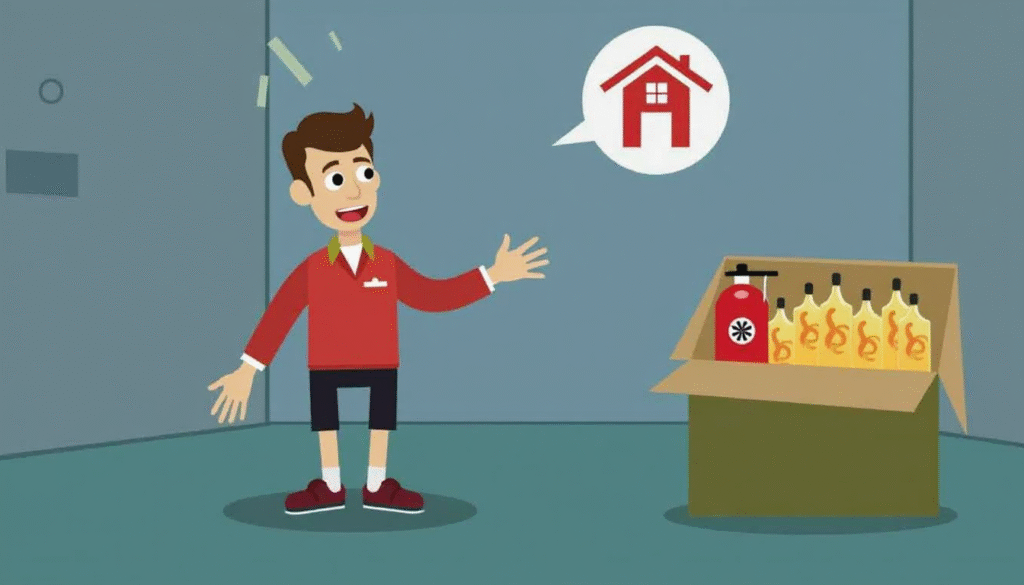Being ready for any kind of emergency isn’t just smart—it’s essential. Emergency preparedness means having a solid plan, the right supplies, and the knowledge to protect yourself and your loved ones when disaster strikes. Whether it’s a hurricane, wildfire, power outage, or flood, knowing how to respond can save lives and reduce panic.
Why Emergency Preparedness Matters

Preparedness is not fear; it’s confidence. When storms intensify, wildfires spread, or power grids fail, your ability to act quickly and correctly depends on how well you’ve prepared. According to the National Weather Service, many injuries during extreme weather events occur due to lack of planning. Don’t wait for a crisis to hit—start now.
Key Reasons to Be Prepared:
- Disasters can strike with little to no warning
- Emergency services may be delayed or unavailable
- Sheltering in place may be necessary for extended periods
- Preparedness reduces confusion, fear, and injury
Visit our Weather Updates page for real-time alerts and detailed storm tracking for your region.
Building an Emergency Preparedness Plan
Creating a plan starts with understanding the risks in your area. For instance, if you live in a coastal region, hurricanes may be your biggest threat. Inland areas may be more prone to tornadoes, floods, or blizzards.
Step 1: Know Your Hazards
Check your local government’s website or resources like the Red Cross to identify threats specific to your region. These could include:
- Floods
- Tornadoes
- Earthquakes
- Hurricanes
- Wildfires
- Heatwaves
To see specific risk levels by location, explore our Geo Results section.
Step 2: Make a Communication Plan
When disaster strikes, cell towers may be down and the internet unreliable. Your family should know exactly how to reconnect and where to meet.
Use this Communication Plan Template to write out emergency contacts, meeting points, and instructions for various scenarios.
Step 3: Prepare an Emergency Supply Kit
A well-stocked kit can keep you safe and healthy for several days if services are disrupted. Learn what to pack in our Emergency Supply Kit List, including:
- Water (one gallon per person per day for at least 3 days)
- Non-perishable food
- Flashlight and batteries
- First-aid kit
- Prescription medications
- Cash and important documents
- Battery-powered or hand-crank radio
Emergency Preparedness at Home
Your home is your first line of defense. Take time to make it disaster-ready:
- Secure large furniture and appliances to prevent injury during earthquakes or hurricanes
- Install smoke detectors and carbon monoxide detectors on every level
- Store backup power sources such as solar chargers or a generator
- Waterproof important documents and store them in a safe location
Explore our Hurricane Checklist for a full room-by-room guide to securing your home.
Community Preparedness
Preparedness isn’t just personal—it’s also communal. Join or start a neighborhood watch or emergency response team. Communities that train together respond faster and recover more quickly.
You can find local safety tips and examples of community-led efforts at Entergy’s Storm Safety Center.
Power Outage Readiness
Power failures can occur during heatwaves, storms, or grid overloads. Here’s how to stay safe:
- Have backup lighting (flashlights, lanterns—not candles)
- Keep refrigerator and freezer doors closed to preserve food
- Disconnect electronics to avoid power surge damage
- Know how to manually open electric garage doors
Learn more from PG&E’s Outage Safety Guide.
Evacuation Planning
Sometimes staying put isn’t an option. Having an evacuation plan is crucial.
- Know multiple exit routes from your home and neighborhood
- Have a “go-bag” packed and ready
- Keep your car’s gas tank at least half full
- Arrange transportation in advance if needed
Use our Evacuation Planning Guide for detailed steps.
Weather Preparedness Tips for Different Seasons
Storms & Hurricanes:
Secure windows and outdoor items, trim trees, and follow evacuation orders. Check out real-time forecasts on our Weather Updates dashboard.
Heatwaves:
Stay hydrated, avoid outdoor activity, and wear lightweight clothing. Climate Central’s recent report shows a global increase in extreme heat events.
Winter Storms:
Stock up on salt and shovels, insulate pipes, and avoid driving in icy conditions.
Practical Safety Training
Taking a CPR or basic first aid class can make a difference in emergencies. Visit your local fire department or check online resources like NWS Severe Safety Tips for training ideas.
You can also use tools like Cemfus Tools to access professional preparedness templates, alert systems, and printable checklists.
Digital Preparedness Tools
Use weather apps, emergency alert systems, and GPS-based notifications to stay informed. Our site, STWARN, integrates these tools so you can stay ahead of the storm.
Bookmark our Blog and Support Page for regular tips and updates.
Final Thoughts on Emergency Preparedness
Emergency preparedness isn’t just about surviving—it’s about thriving under pressure. The time you invest today can mean peace of mind tomorrow. From building your kit to planning your exit, preparedness is a habit that saves lives.
Get started now by exploring our complete Preparedness Hub and download your emergency checklist. Stay alert, stay calm, and stay ready.

